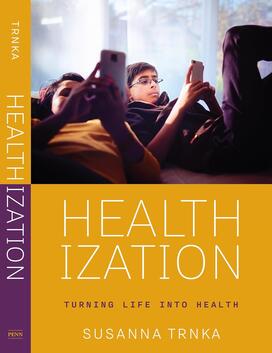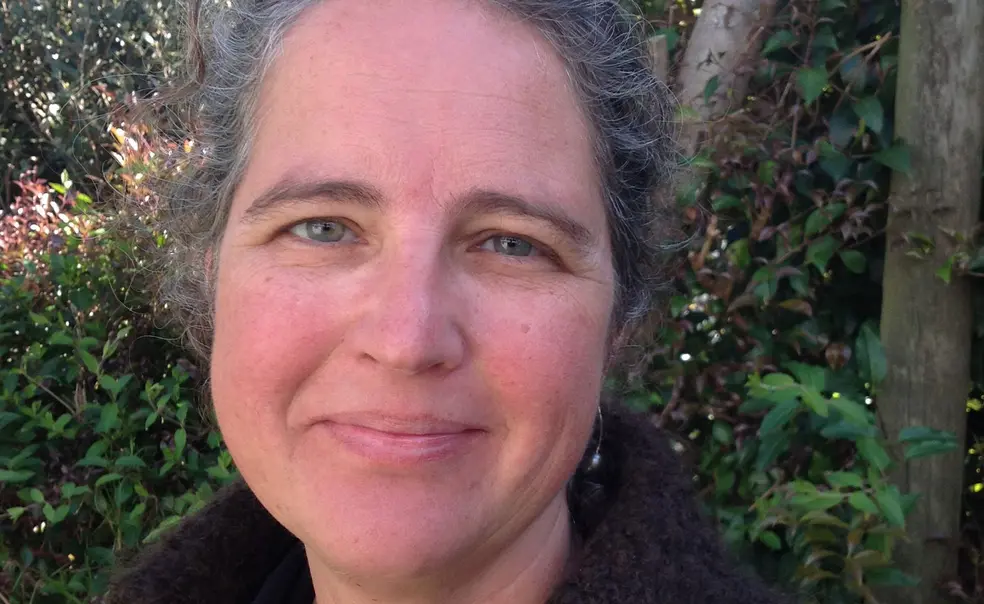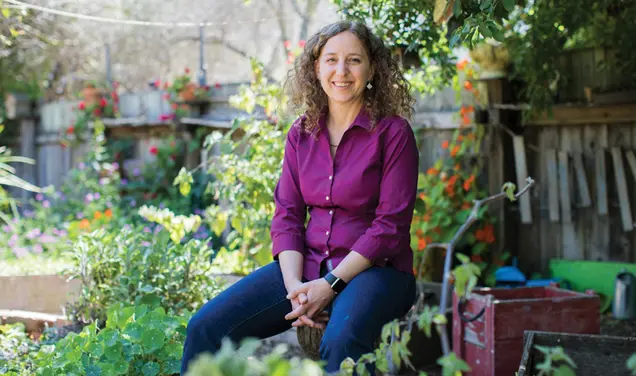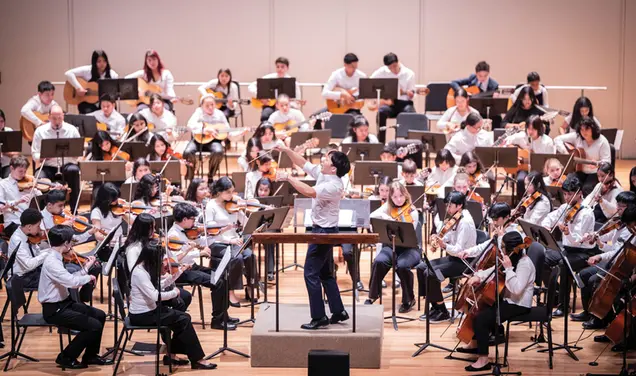Anthropologist Susanna Trnka *02 Dissects Shifting Views of Health
The book: Throughout the years, the meaning of true health has evolved. Susanna Trnka *02 begins Healthization (Penn Press) by reflecting on her own definitions of health as a teenager in the 1980s, which she writes was largely viewed as a gift you either did or didn’t have. Today’s teens’ perceptions of health are completely different as research has pointed to the importance of living a healthy and active lifestyle. Based on 235 interviews with New Zealanders ages 14-24, Trnka — who is an anthropologist — reveals the personal motivations of these young people to understand why and how narratives on health have shifted.

The author: Susanna Trnka *02 earned her graduate degree in anthropology from Princeton. She went on to become a professor of social and medical anthropology at the University of Auckland, where she has taught and conducted research for more than 20 years. She’s also the editor-in-chief of American Ethnologist, a quarterly journal which focuses on the social and cultural practices of people. Trnka has published 10 other books including Traversing, One Blue Child, and State of Suffering.
Excerpt:
Chapter 1 - This New Thing Called Health
Being Healthy Isn’t What It Used to Be
When I was a teenager, worrying about my health felt a long way off. For many adolescents in the 1980s, health was something you were born with and told to enjoy for as long as it lasted. At some point, all of us would inevitably be struck by illness or infirmity, some sooner than others, but we generally devoted little time or energy to thinking about what we might, much less should, do about this. And despite the discourse of inevitable loss, health was not viewed as something we should be actively trying to gain, shoring up as much of it as we could before it began to unravel. Health was simply something you were lucky to have, until you didn’t.
Today, health is situated in investment logic. It is widely understood as something we — and that includes young people — can “work” to attain more of, something that increases or decreases depending on how much we put into it. Barring accidents or genetics tipping the scales in or against our favor (what we once thought of as “heredity”), health is viewed as a facet of life into which it is morally correct to invest time, energy, and physical effort.
Our understanding of what constitutes health has also changed, becoming much more expansive. If I had been asked to define “health” as a high school student, I would likely have described it as the absence of physical illness or injury. On a particularly reflective day, I might have included not suffering from mental illness. Today, we can add a long list of other aspects — emotional health, social health, social media health, sexual health, spiritual health, intellectual health — all of which are recognized by young people as distinct, if overlapping, features of what it is to be “healthy.” Through a dynamic I think of as healthization, areas of life such as our friendships, our ability to express our emotions, or our sense of attractiveness, which were never before considered part of our health (no matter how important they might have felt to us), can now determine whether we see ourselves as healthy.
But health is not just a state of being. It is a project, a project that at times appears so multifaceted that it seems neverending. Young or old, wealthy or financially precarious, as we skim through media stories, turn on the TV, or passively absorb the messages on billboards and placards on buildings and at bus stops, we are bombarded with both enticements and warnings to work on our health, be it to take a mental health break, slather on some sunblock, or eat more fiber.
While this awareness is an international phenomenon, prevalent across many Western nations, it is particularly salient in Aotearoa/New Zealand where the past 40 years have witnessed a growing emphasis on the importance of patient “self-responsibility.” One of only two countries in the world that allow direct consumer advertising of prescription pharmaceuticals (the other being the United States), Aotearoa/NZ has been the site of a deluge of marketing and health education campaigns promoting the devolution of health-related tasks onto patients themselves. Here, as elsewhere in the West, we have adapted to the role of “expert patients,” taking charge of our bodies and our futures.
Our “anticipatory” stance toward doing whatever we can to ward off potential future illness has been described as largely focused on avoiding unnecessary risk. As Joseph Dumit surmises, “It appears to be that feeling healthy has become a sign that you need to be careful and go in for screening. To be normal, therefore, is to be insecure.” In a similar vein, Nikolas Rose notes that our current thinking, which “brings potential futures into the present and tries to make them the subject of calculation and the object of remedial intervention... generates the sense that some, perhaps all, persons, though existentially healthy are actually asymptomatic or pre-symptomatically ill.”
But focusing on risk aversion is too narrow a perspective. Today’s approach to health increasingly emphasizes the positive valences of an enormous range of activities we must undertake to even qualify as being well, as exemplified by the newfound emphasis on “well-being,” which promotes “resilience,” “flourishing,” and a sense of “wellness” as celebratory components of being healthy. Many of us head to the gym to ward off obesity or osteoporosis, but we also work out to feel good about ourselves and perhaps even to appear morally and physically virtuous to others. This new emphasis, promoted by corporations, the media, public health authorities, and many members of the general public, appears to at least partially decenter the focus on risk. It is not that risk disappears from our line of vision — far from it — but that health becomes even more encompassing.
The promise that we can become not only fitter but better people by working on our health may not be new, given the long histories of fitness movements and public health initiatives in the Western world. It has, however, recently taken center stage, particularly among young people who actively work on their health through “gyming” (working out in the gym), reducing alcohol consumption, and maximizing water intake, protein, and step counts as well as actively investigating various ailments and physical and mental discomforts online. Drawing on discussions with over 200 young New Zealanders, this book documents young people’s efforts to enact such broad conceptualizations of health, showing how they embrace, yet also struggle with, a much wider understanding of what it takes to be healthy than we have arguably seen before.
In Aotearoa/NZ such an expansive view of health is often associated with the Māori concept of hauora, which is usually glossed in English as “well-being” or “health and well-being” and emphasizes health as composed of four components: the physical, the mental and emotional; the spiritual; and the familial (or sometimes, more broadly, the social). These four components are frequently depicted as the four walls of a house to show how they work together to create healthy individuals. For over 20 years, hauora has been part of the official school health curriculum.
These new ways of thinking are not, however, specific to Aotearoa/NZ but are part of a broader, international trend of healthization, expanding under-standings of what constitutes being healthy. The popular American journal Psychology Today describes health as a Greek temple held up by the three pillars of physical, mental, and social health. The website of Banner — the largest western American hospital and family physician provider — offers tips for “Eight ways to take care of your spiritual health.” In the UK, since the release of a 2019 report on social media and youth mental health and well-being, the Royal Society for Public Health has been lobbying for the establishment of an alliance to monitor “social media health.” Across many Western nations, health has grown to include a range of elements that many of us may have deemed important thirty or 40 years ago but likely would not have viewed as part of our daily health activities, so much so that, today, restocking our “emotional toolkit” stands alongside brushing our teeth.
Gauging our “well-being” has also become a population-wide measure of progress. In a move hailed by the International Monetary Fund as “changing the conversation on well-being,”, in 2019 Aotearoa/NZ became the first country to adopt a “Wellbeing Budget,” designed to track the economy via measures of well-being rather than the Gross Domestic Product. Australia later followed, adopting its own “Wellbeing Budget” in July 2023, at which point Aotearoa/NZ was already on its fourth iteration. Health and well-being — sometimes used interchangeably, sometimes viewed as complementary, and often conjoined in the ubiquitous phrase “health and well-being” — are now paramount goals for individuals and for the nation at large.
While these discourses of working on health and well-being, sometimes referred to as the “wellness movement,” are intended to galvanize society as a whole, they particularly resonate among young people who are not only making their initial forays into controlling their own care but are often at the forefront of reenvisioning what “being healthy” should entail. New Zealand youth position themselves as leading the way in breaking down stigma and publicly opening up about mental health issues. They are prominent among the faces and bodies of fitness and beauty influencers and their followers. They engage in new ideologies of emotional health, exploring novel forms of online communication as they experiment with different forms of intimacy during the transition from childhood to adulthood . They also actively attempt to optimize their emotional well-being through a vast array of physical, social, and therapeutic measures, many of which are far more complex than the emotional tracking envisaged by app developers. Often newly vested with responsibility for making decisions about their physical health — from what to do about an irksome cough to how to cope with a miscarriage — and sometimes directly responsible for ensuring the health of others, they are highly attuned to how not only knowledge but bodily experience, trust, attentiveness, and other values, such as independence, shape medical decision-making.
The young people’s stories in this book offer a window on the different ways health is experienced in the first part of the 21st century. For many of them, health isn’t about being a patient in the medical system; it is a moral approach to how one lives their life. Health has become a new project of self-fashioning through which they constitute themselves as independent subjects vis-à-vis their parents, teachers, friends and peers, and publics at large. But health is also inherently interrelational and young people are acutely concerned about how best to seek and receive the care and recognition they need as well as how best to take care of others — whether they be friends, siblings, parents, lovers, classmates, or the people they fleetingly or more enduringly interact with online. While scholars have focused on advanced liberalism’s emphasis on self-responsibility or “do-it-yourself” approaches to health, health remains a collective effort, and young people often deeply involve themselves in safeguarding the physical and emotional well-being of others. In a space where being healthy, or at least trying to be healthy, is impregnated with moral value, health also becomes a matter of maintaining particular kinds of public personas, influencing how youth present themselves to different audiences, on- and offline. For many young people, being a “good” member of society has come to mean actively working on one’s health and the health of others. Citizenship has become a collaborative project of the making of the self.
This book examines how young people in contemporary Aotearoa/NZ shape their health while at the same time adopting and promoting a seemingly never-ending definition of what that entails. Although there are distinctions in how health is visualized and enacted based on a range of factors, such as class, gender, ethnicity, age, regional location, and life experience, there emerges a generalized phenomenon among youth of both a wide-ranging conceptualization of health and the necessity of actively working to achieve it. This book focuses not on the inevitable variability of perspectives among young people, but on giving voice to this shared understanding. Through the concept of healthization, I suggest that we can understand how “health” is expanding to include not only physical and mental health but also our emotions, our abilities to recognize others and be recognized by them, the number of hours we have run or slept, our need for moments of co-feeling, our sense of calm, our capacity to accept loneliness — to the point of almost encompassing life itself.
Excerpted from Healthization: Turning Life into Health by Susanna Trnka.Copyright © 2025. Printed with permission of the publisher University of Pennsylvania Press.
Review:
“With this rich ethnographic analysis, Susanna Trnka provides powerful insights regarding how health has become not only a project of self-fashioning, but a collective project linking body and society.” — Tom Boellstorff, University of California, Irvine











No responses yet